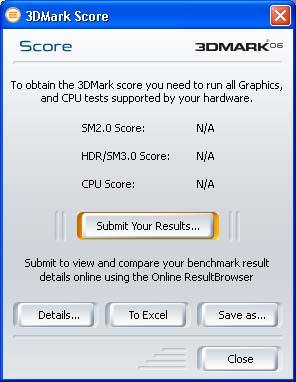3DMark06 Under the Magnifying Glass
Scoring Calculations Dissected
As is the case in school exams, the bottom line of all testing is the score. The formula for the score in 3DMark06 is as follows:
The sections are broken down by their core components. The first line shows the Shader Model 2.0 game tests, Return to Proxycon and Firefly Forest. This score is defined as one half of the total game score. The value from these tests is one half of 120 times the sum of the FPS scores from tests one and two.
The second line defines the Shader Model 3.0 tests with HDR, since the other half of the game score is defined as one half of 100 times the sum of the third and fourth game tests (Canyon Flight SM3.0 and Deep Freeze). The third row represents 2,500 times the square root of CPU test 1 plus CPU test 2.
Here you can see that the overall score is weighted heavily to the game test scores. However, if the graphics card cannot do the SM 3.0 tests, then there is an alternative scoring, which computes the game score as 75% of the value of the SM 2.0 score.
This alternative scoring method did not sit right with us for a couple of reasons. First, if the system that the tests are run on has a fast processor but a SM 2.0 card, the CPU score weighs in more heavily than if it had a SM 3.0 card. Second, this is the only exception rule in the scoring. We have used this benchmark to test the ability of a card to handle anisotropic filtering and antialiasing. Since Nvidia cards cannot support floating point blending with multisampling antialiasing, why isn't there a score mechanism for this type of testing? We decided to ask Futuremark about this.
Get Tom's Hardware's best news and in-depth reviews, straight to your inbox.
Current page: Scoring Calculations Dissected
Prev Page Other Tests, Continued Next Page Scoring Calculations Dissected
